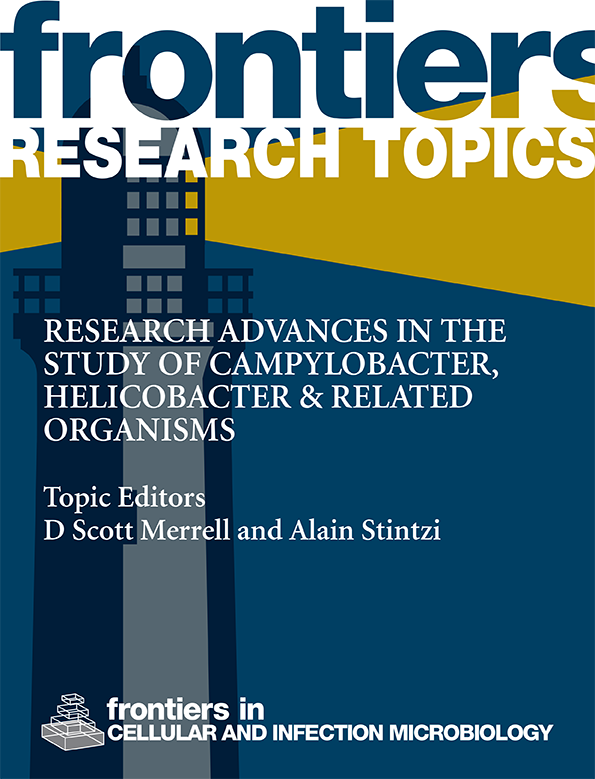Fusobacterium nucleatum induces invasive growth and angiogenic responses in malignant oral keratinocytes that are cell line- and bacterial strain-specific
IF 4.6
2区 医学
Q2 IMMUNOLOGY
Frontiers in Cellular and Infection Microbiology
Pub Date : 2024-09-02
DOI:10.3389/fcimb.2024.1417946
引用次数: 0
Abstract
核分枝杆菌诱导恶性口腔角朊细胞的侵袭性生长和血管生成反应,这种反应具有细胞系和细菌菌株特异性
核叉杆菌是一种口腔厌氧共生菌,最近有报道称它与胃肠道癌症和口腔鳞状细胞癌(OSCC)有关。在本研究中,我们调查了从口腔发育不良患者(6 人)中回收的多形性核酸核菌亚种基因多样性菌株感染对口腔角朊细胞的影响。我们使用了来自一期 OSCC 的 H357 口腔角质细胞和来自三期 OSCC 的 H376 细胞。粘附表型具有菌株特异性,受检的 3/6 临床分离株对 3 期 H376 细胞系的粘附性更高。相反,H357细胞的胞内侵袭能力最强,并与特定的转录反应有关,包括自噬和角质化。感染H357和H376细胞系会诱导与癌细胞迁移和血管生成有关的转录和细胞因子反应。在H376细胞系中,F. nucleatum感染诱导了更高水平的MMP9分泌,这与细胞运动和侵袭表型的增强有关。此外,不同临床分离的多形核因子亚种F. nucleatum诱导H376细胞侵袭生长的程度也不同。使用抑制剂 metCCL5 阻断 CCL5 信号可减少角质形成细胞的侵袭。F. nucleatum 感染还能诱导促血管生成趋化因子 MCP-1 和血管生成生长因子 VEGF-A 的表达,从而增加 HUVEC 细胞中毛细血管样管的形成,其中以 H376 细胞最为显著。用白藜芦醇(一种 VEGF-A 信号抑制剂)处理 HUVEC 细胞可明显减少 F. nucleatum 诱导的管形成。我们的数据表明,F. nucleatum与口腔细胞相互作用的结果会因细菌基因型和宿主细胞恶性表型的不同而有很大差异。
本文章由计算机程序翻译,如有差异,请以英文原文为准。
求助全文
约1分钟内获得全文
求助全文
来源期刊

Frontiers in Cellular and Infection Microbiology
IMMUNOLOGY-MICROBIOLOGY
CiteScore
7.90
自引率
7.00%
发文量
1817
审稿时长
14 weeks
期刊介绍:
Frontiers in Cellular and Infection Microbiology is a leading specialty journal, publishing rigorously peer-reviewed research across all pathogenic microorganisms and their interaction with their hosts. Chief Editor Yousef Abu Kwaik, University of Louisville is supported by an outstanding Editorial Board of international experts. This multidisciplinary open-access journal is at the forefront of disseminating and communicating scientific knowledge and impactful discoveries to researchers, academics, clinicians and the public worldwide.
Frontiers in Cellular and Infection Microbiology includes research on bacteria, fungi, parasites, viruses, endosymbionts, prions and all microbial pathogens as well as the microbiota and its effect on health and disease in various hosts. The research approaches include molecular microbiology, cellular microbiology, gene regulation, proteomics, signal transduction, pathogenic evolution, genomics, structural biology, and virulence factors as well as model hosts. Areas of research to counteract infectious agents by the host include the host innate and adaptive immune responses as well as metabolic restrictions to various pathogenic microorganisms, vaccine design and development against various pathogenic microorganisms, and the mechanisms of antibiotic resistance and its countermeasures.
文献相关原料
| 公司名称 | 产品信息 | 采购帮参考价格 |
|---|
 求助内容:
求助内容: 应助结果提醒方式:
应助结果提醒方式:


